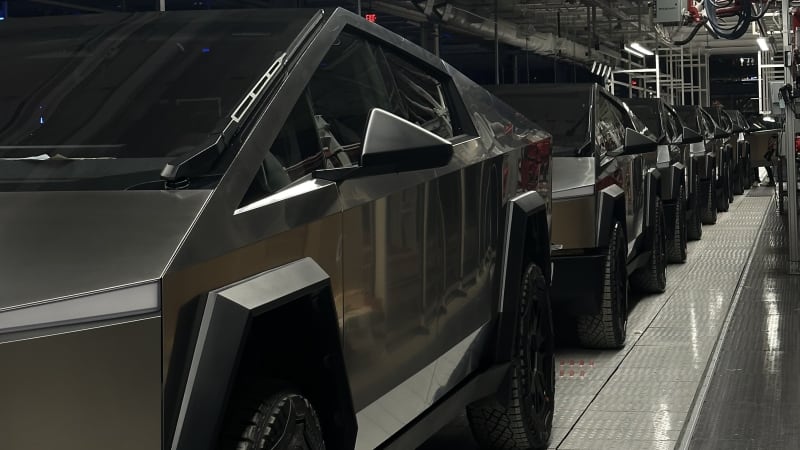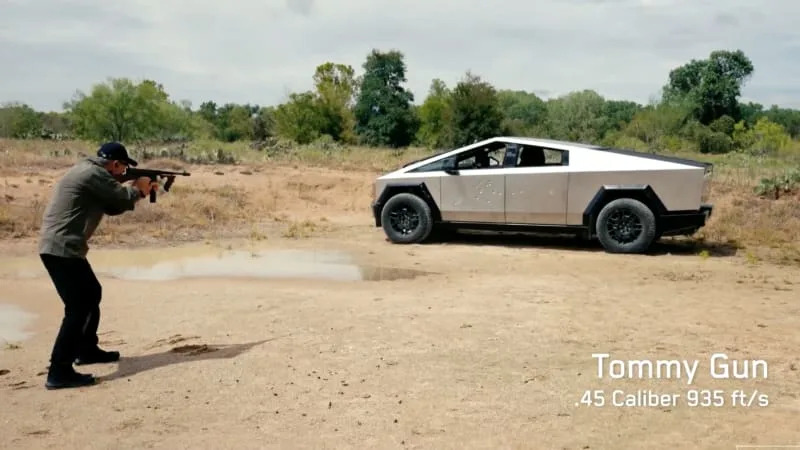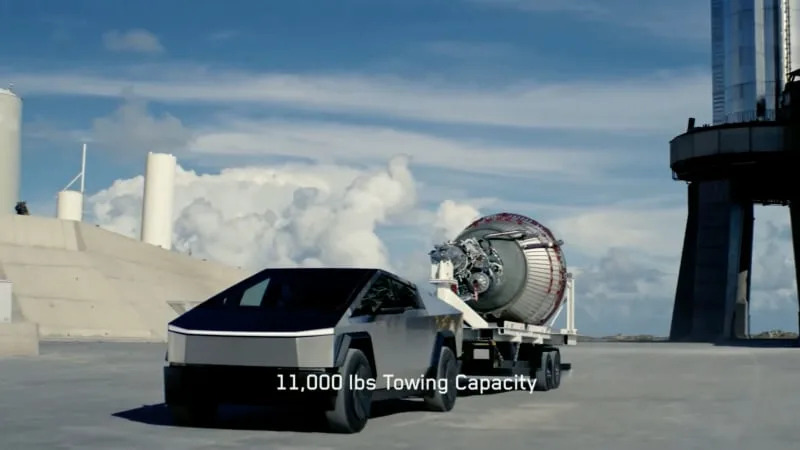Tesla Cybertruck price, specs, features finally revealed — plus, Cyberbeast

The time has come. Four years after its initial reveal, Tesla is handing over the first production units of its mold-shattering Cybertruck electric pickup — 10 units, to be exact. Yes, this launch party at Tesla’s Texas gigafactory feels like a long time coming, after multiple delays, and even Elon Musk saying, “We dug our own grave with the Cybertruck.” Citing “enormous challenges” with production, it should be awhile before the truck starts making Tesla any money.
But it likely matters little to the first Cybertruck customers that Tesla isn’t making money off their early purchases. They get to be the first to cruise the neighborhood in a vehicle that still looks more like a concept car than something you’d expect to see on a job site or towing a boat.
As for the hard details, Musk didn’t offer much during the livestream, but Tesla has published some online. According to the configurator:
The Rear-Wheel Drive model, coming in 2025, starts at an estimated $60,990. It offers an estimated 250-mile range and a 6.5-second 0-60 time, and can tow 7,500 pounds.
The All-Wheel Drive dual-motor version starts at $79,990. Its specs are more impressive, with 350 miles of range, 600 horsepower, a 4.1-second 0-60 sprint and 11,000 pounds of towing. It comes in 2024.
Finally, the Cyberbeast also comes in 2024, with an estimated price tag of $99,990. With 845 horsepower, it will do 0-60 in 2.6 seconds on the way to a top speed of 130 miles per hour. Tesla estimates 320 miles for the Cyberbeast, and says it’ll also tow 11,000 pounds.
Inside, the AWD and Cyberbeast get an 18.5-inch touchscreen display, with another 9.4-inch touchscreen for the rear passengers.
Customers will also benefit from Tesla’s Supercharger network, an infrastructure that is the envy of other EV drivers. Without providing battery specs, Tesla states the AWD model can add 136 miles in 15 minutes while fast-charging, while the Cyberbeast will add 128 miles in the same timeframe. Interestingly enough, the Tesla site mentions a “range extender” for the Cybertruck, which also increases the range of the AWD to 470+ miles, and the Cyberbeast to 440+ miles. Musk confirmed on X that the “range extender” is an “optional pack that fits in about 1/3 of the truck bed.” The added range it provides is meant for longer trips or towing.
At the delivery event, Elon Musk lauded the Cybertruck’s strengths. Its Tesla-designed steel alloy is tough, providing the truck with more “torsional stiffness than a McLaren P1.” It can also withstand .45-caliber bullets, as he demonstrated in a video. The glass is “basically rock-proof” and helps isolate sound from the cabin. He showed it towing rocket components, and outperforming its competitors in a county fair-like truck pull. Video showed it winning a quarter-mile drag race with a Porsche 911 while towing a Porsche 911. Neat stuff, but we imagine that was the Cyberbeast model doing the work.


Musk gave a few other details during the presentation. The Cybertruck has a 4×6-foot bed, and can tow up to 11,000 pounds. With 35-inch tires and 17 inches of ground clearance in “Extract” mode, it should have some capability on less-than-ideal terrain. It has locking differentials and torque vectoring (exclusive to the tri-motor Cyberbeast), four-corner adaptive suspension, a steer-by-wire system and four-wheel steering. It uses a 48-volt electrical system. Other details from the event confirm that the Cybertruck will have a power-opening frunk, come with a tow hitch integrated into the rear bumper, feature a bed made of “sheet-molded composite” and use 4680 battery cells. We’re not sure about what color wraps will be offered, but Tesla says that wraps will be available, similar to what we’ve seen made purchasable on other Tesla models.
Getting to this point took a lot of time, filled with hard work, setbacks, and plenty of uncertainty and doubt to get those first Cybertrucks into customers’ hands. The problems started early, when during the reveal, the truck’s “armored glass” windows cracked during a demonstration of their strength. Just days after its debut, the story seemed better, as Tesla garnered 200,000, then 250,000 reservations for its Cybertruck — with a refundable deposit of $100. In those early days, we saw the Cybertruck play tug-of-war with a Ford F-150, Then the delays came, and what was supposed to arrive in 2021 was pushed back. To be fair, other automakers promised their own electric trucks by 2021, and only Rivian (after a delay of its own) managed to get any into customers’ driveways that year. But Rivian and Ford both got head starts on Tesla with excellent products. Tesla, though, thinks its Cybertruck is in a league of its own, and it’s hard to argue with that. Just look at the thing.
And the uncertainty still lingers. The early adopters and Tesla fanbase are surely won over, but what will living with the Cybertruck be like? Will build quality be an issue? (Though the first trucks off the line look quite clean.) Will the mono-wiper be a pain? Will customers be satisfied with its performance? What other problems will arise in the Cybertrucks early days, and as Tesla ramps up production? What other software, hardware and performance breakthroughs will Tesla incorporate down the line, as it has done with its other models? Although it’s already four years in the making, the Cybertruck story doesn’t end with the handover of the first keys. Stay tuned.







